Buddhist Philosophy and the Politics of Peace
Buddhist philosophy offers a profound lens through which we can explore the intricate relationship between spirituality and politics, particularly in the quest for peace. At its core, Buddhism emphasizes the importance of inner tranquility and ethical living, which, when applied to the political arena, can lead to transformative approaches to conflict resolution and social harmony. Imagine a world where leaders prioritize compassion and understanding over power and aggression—this is the essence of Buddhist principles in politics.
One of the most compelling aspects of Buddhist philosophy is its emphasis on interconnectedness. This idea suggests that our actions, whether positive or negative, ripple through the fabric of society, impacting not just ourselves but everyone around us. Therefore, when political leaders embrace these teachings, they can foster environments that prioritize collective well-being rather than individual gain. This approach encourages a shift from adversarial politics to collaborative governance, where the ultimate goal is to create a peaceful coexistence among diverse communities.
Furthermore, the practice of mindfulness, which is central to Buddhism, equips individuals with the tools to navigate the complexities of political life. Mindfulness fosters a state of awareness that helps leaders make thoughtful decisions, reducing the likelihood of reactive and harmful actions. By cultivating a mindful approach, political figures can engage in more meaningful dialogues, paving the way for understanding and resolution rather than conflict.
In essence, Buddhist philosophy does not merely advocate for passive acceptance of the status quo; rather, it inspires active participation in the pursuit of peace. This philosophy encourages individuals and leaders alike to reflect on their motivations and the broader implications of their actions. When political strategies are informed by compassion, empathy, and ethical considerations, the potential for genuine peace becomes not just a distant dream but a tangible reality.
- What are the Four Noble Truths in Buddhism? The Four Noble Truths are essential teachings that outline the nature of suffering and the path to liberation from it.
- How does mindfulness contribute to political leadership? Mindfulness allows leaders to make more considered decisions, fostering a peaceful approach to governance.
- What is ahimsa and why is it important? Ahimsa, or non-violence, is a key principle in Buddhism that influences ethical decision-making and promotes peaceful coexistence.
- Can Buddhist principles be applied in modern political contexts? Yes, many contemporary movements draw inspiration from Buddhist teachings to advocate for social justice and peace.

Foundations of Buddhist Philosophy
Buddhist philosophy is a rich tapestry woven from various threads of thought, practice, and ethical considerations that aim to foster peace and understanding in a complex world. At its core, it revolves around the Four Noble Truths and the Eightfold Path, which serve as guiding principles for individuals seeking to navigate the challenges of life. These foundational concepts not only provide insights into the nature of suffering but also offer a roadmap for achieving inner peace and harmony in society.
The Four Noble Truths articulate the essence of Buddhist teachings, presenting a framework that begins with the acknowledgment of suffering (Dukkha). This recognition is not merely a pessimistic view of life; rather, it is a profound understanding that suffering is an inherent aspect of the human experience. The second truth identifies the origin of suffering, which is often tied to desire and attachment. By grasping this connection, individuals can begin to see how their own actions contribute to cycles of conflict and unrest.
Moving forward, the third noble truth offers a glimmer of hope: the cessation of suffering is achievable. This leads to the fourth truth, which outlines the path to liberation—the Eightfold Path. This path consists of eight interconnected practices that guide individuals toward ethical conduct, mental discipline, and wisdom. These practices include:
- Right Understanding: Comprehending the nature of reality and the path of transformation.
- Right Intent: Cultivating an attitude of love and compassion.
- Right Speech: Speaking truthfully and harmoniously.
- Right Action: Engaging in ethical conduct.
- Right Livelihood: Choosing a profession that does not harm others.
- Right Effort: Making a persistent effort to develop wholesome states of mind.
- Right Mindfulness: Developing awareness of the body, feelings, and thoughts.
- Right Concentration: Cultivating deep states of meditative absorption.
Through the practice of these principles, individuals can cultivate a mindset that prioritizes peace and understanding, not only within themselves but also in their interactions with others. This is where the intersection of Buddhist philosophy and political practices becomes evident. When political leaders and activists embrace these teachings, they create a fertile ground for dialogue, empathy, and conflict resolution.
Moreover, the emphasis on mindfulness in Buddhism cannot be overstated. Mindfulness encourages a deep awareness of the present moment, allowing individuals to respond to situations with clarity and compassion rather than reacting impulsively. This practice is particularly relevant in political contexts, where decisions can have far-reaching consequences. By integrating mindfulness into political leadership, leaders can foster environments of peace and cooperation, steering their communities away from discord and towards harmony.
In conclusion, the foundations of Buddhist philosophy provide invaluable insights into the nature of suffering and the pathways to peace. By understanding and applying the Four Noble Truths and the Eightfold Path, individuals and leaders alike can contribute to a more peaceful and compassionate society. As we explore the broader implications of these principles in the context of politics and social activism, we begin to see how they can illuminate paths toward conflict resolution and community building.

The Concept of Ahimsa
Ahimsa, a profound principle within Buddhism, translates to non-violence and is deeply woven into the fabric of its philosophy. At the heart of ahimsa lies the understanding that every action has consequences, not just for the individual but for the broader community and the world at large. This principle encourages individuals to act with compassion and empathy, promoting a culture of peace rather than conflict. Imagine a world where every decision is made with the intention of causing no harm—this is the essence of ahimsa.
In political contexts, ahimsa serves as a guiding light for ethical decision-making. It challenges leaders and citizens alike to consider the impact of their actions on others. When faced with the complexities of governance, the principle of ahimsa implores politicians to seek peaceful resolutions rather than resorting to aggression. This approach not only fosters a more harmonious society but also creates a foundation for sustainable development. The ripple effects of non-violence can be seen in various aspects of life, from local communities to global interactions.
Moreover, the practice of ahimsa extends beyond mere abstention from violence; it encompasses a proactive stance on promoting peace. This can be illustrated through various avenues:
- Dialogue and Communication: Engaging in open discussions to resolve differences.
- Empathy and Understanding: Cultivating a deep understanding of others' perspectives.
- Community Engagement: Working collectively to address social injustices and conflicts.
Throughout history, ahimsa has inspired numerous movements and leaders. Figures such as Mahatma Gandhi and Martin Luther King Jr. embraced this principle, effectively using it as a tool for social change. Their legacies remind us that non-violence is not a passive stance but an active commitment to justice and equality. By embodying ahimsa, these leaders demonstrated that peaceful resistance can lead to monumental shifts in societal norms and values.
In contemporary society, the relevance of ahimsa remains undeniable. Activists around the world draw upon Buddhist teachings to advocate for social justice, environmental sustainability, and human rights. For instance, movements addressing climate change often emphasize non-violent protests, highlighting the interconnectedness of all beings and the need for a harmonious relationship with nature. This modern application of ahimsa reinforces the idea that peace is not merely the absence of conflict, but the presence of justice and equity.
However, the journey of applying ahimsa in political contexts is fraught with challenges. In a world where aggression often seems like the easiest solution, maintaining a commitment to non-violence can be daunting. Political leaders may face immense pressure to respond to conflict with force, and the temptation to abandon ahimsa can be strong. Yet, it is precisely in these moments of tension that the teachings of Buddhism shine brightest, reminding us of the power of patience, understanding, and dialogue.
In conclusion, ahimsa is more than just a concept; it is a way of life that encourages individuals and societies to strive for peace through non-violent means. By embracing this principle, we can cultivate a world where compassion reigns, and conflicts are resolved through understanding rather than violence. As we navigate the complexities of modern politics, let us remember the wisdom of ahimsa and its potential to transform our interactions and relationships.
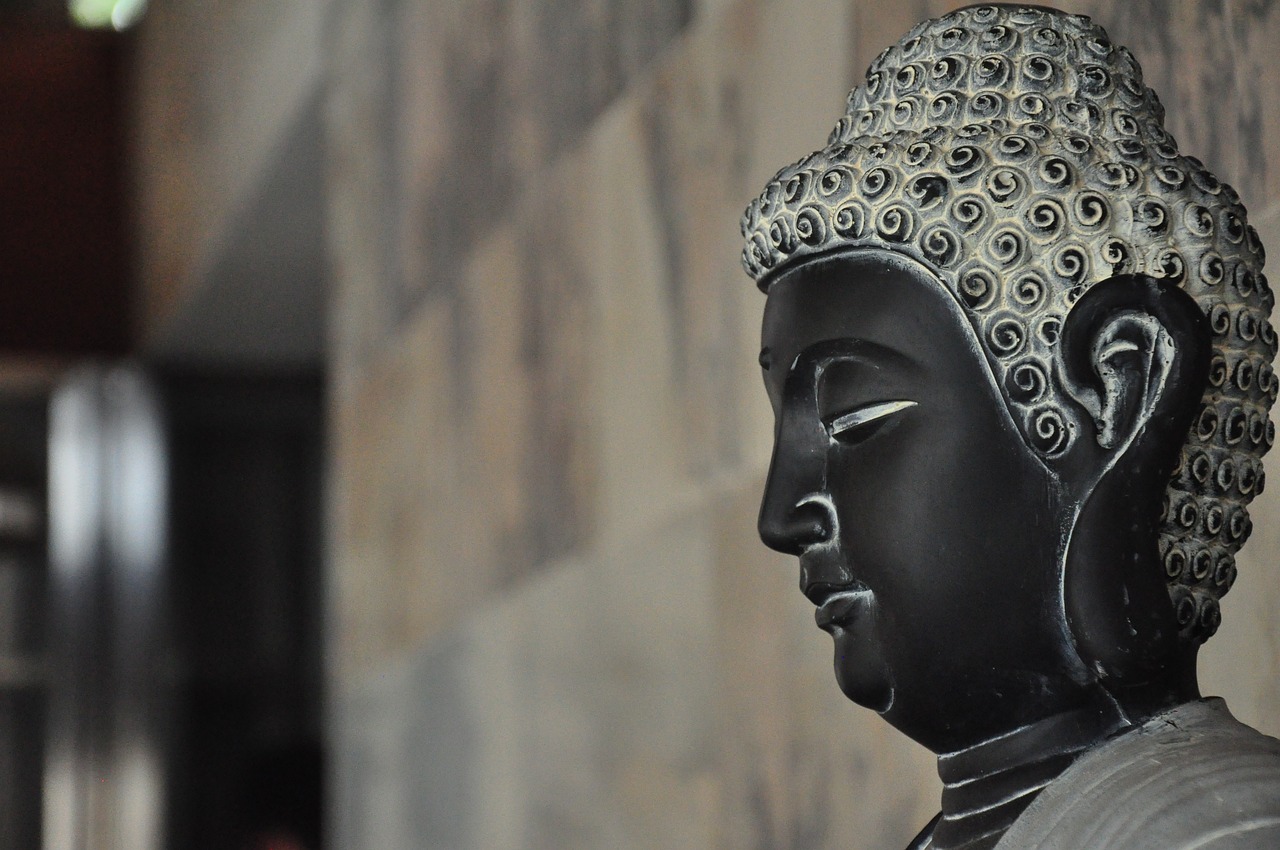
Historical Context of Ahimsa
The principle of ahimsa, or non-violence, has deep roots in Buddhist philosophy, and its historical context is rich and multifaceted. Originating from ancient Indian traditions, ahimsa was not only a spiritual concept but also a practical guideline for living harmoniously with others. It is fascinating to see how this principle has evolved, influencing not just individual behaviors but also larger societal movements throughout history.
In the early days of Buddhism, the teachings of the Buddha emphasized compassion and understanding as tools for overcoming suffering. The Four Noble Truths and the Eightfold Path laid the groundwork for a lifestyle that inherently rejected violence. The Buddha himself was known for advocating peaceful resolutions to conflicts, often encouraging his followers to engage in dialogue rather than resorting to aggression. This approach set a precedent that would resonate through the ages.
As Buddhism spread beyond India, it absorbed and adapted to various cultural contexts, yet the core tenet of ahimsa remained intact. For instance, in the context of Theravada Buddhism, which is prevalent in Southeast Asia, ahimsa is often expressed through community practices that foster mutual respect and understanding. In contrast, Mahayana Buddhism, dominant in East Asia, emphasizes the bodhisattva ideal, where practitioners vow to attain enlightenment not just for themselves but for all sentient beings, further deepening the commitment to non-violence.
Throughout history, notable figures have embodied the principle of ahimsa, demonstrating its powerful impact on political activism. One of the most prominent examples is Mahatma Gandhi, who drew heavily on Buddhist teachings to advocate for India's independence from British rule. Gandhi’s philosophy of non-violent resistance, or satyagraha, was rooted in the idea that true strength lies in the ability to resist oppression without resorting to violence. His successful campaigns not only transformed India but also inspired civil rights movements around the world.
In a more contemporary context, the application of ahimsa can be seen in various social justice movements. Activists often invoke Buddhist principles to promote peace and reconciliation in conflict-ridden areas. For example, in countries like Sri Lanka and Myanmar, where ethnic tensions have led to violence, Buddhist leaders have played crucial roles in mediating discussions and fostering understanding among conflicting parties. This historical legacy of ahimsa continues to resonate today, as communities strive to navigate the complexities of modern conflicts while adhering to the core Buddhist values of compassion and non-violence.
However, the journey of implementing ahimsa in political contexts has not been without challenges. As we delve deeper into the historical context of ahimsa, it becomes clear that the struggle for peace is ongoing, requiring constant vigilance and commitment from individuals and communities alike.
In summary, the historical context of ahimsa is a testament to the enduring power of non-violence as a principle that transcends time and culture. Its evolution from ancient teachings to modern applications illustrates the potential for peace rooted in understanding and compassion, making it a vital aspect of both personal conduct and political activism.
- What is ahimsa in Buddhism? Ahimsa, or non-violence, is a fundamental principle in Buddhism that emphasizes compassion and the avoidance of harm to all living beings.
- How has ahimsa influenced political movements? Ahimsa has inspired numerous leaders, such as Mahatma Gandhi, advocating for peaceful resistance and social justice without resorting to violence.
- Can ahimsa be applied in modern conflicts? Yes, many contemporary movements draw on the principles of ahimsa to promote dialogue and understanding in conflict resolution.

Ahimsa in Contemporary Movements
In today's world, the principle of ahimsa, or non-violence, has transcended its traditional roots in Buddhism to become a rallying cry for various contemporary movements. This powerful concept serves as a guiding light for activists who strive for social justice, environmental sustainability, and human rights. By embodying the spirit of ahimsa, these movements emphasize the importance of peaceful protest and dialogue over violence and conflict.
One striking example of ahimsa in action is the global environmental movement. Activists advocating for climate justice often highlight the interconnectedness of all living beings, echoing Buddhist teachings that stress compassion and respect for nature. By promoting non-violent methods such as peaceful demonstrations, educational campaigns, and community engagement, these activists aim to create a sustainable future without resorting to aggression.
Another area where ahimsa plays a crucial role is in the fight for human rights. Organizations like the International Campaign for Tibet and Amnesty International draw upon Buddhist principles to advocate for the rights of marginalized communities. They employ strategies rooted in non-violence, encouraging peaceful protests and constructive dialogue with authorities. This approach not only fosters understanding but also builds a strong moral foundation for their cause.
Moreover, the Black Lives Matter movement has also embraced the philosophy of ahimsa, promoting peaceful protests to highlight racial injustice. Activists within this movement often remind us that violence begets violence, and true change can only come from compassion, understanding, and collective action. By adopting non-violent strategies, they seek to dismantle systemic racism while fostering solidarity among diverse communities.
It's fascinating to see how ahimsa adapts to various contexts, yet retains its core essence. The methods employed by these contemporary movements often include:
- Peaceful demonstrations and marches
- Community dialogues and forums
- Artistic expressions to raise awareness
- Digital activism through social media platforms
These strategies not only promote the message of non-violence but also encourage participation from individuals who may not have previously engaged in activism. The inclusive nature of ahimsa fosters a sense of belonging and shared purpose, which is essential for building a robust movement.
In conclusion, the principle of ahimsa continues to inspire and guide contemporary movements across the globe. By emphasizing non-violence, compassion, and understanding, activists are not only addressing pressing social issues but also nurturing a culture of peace that can lead to lasting change. As we witness these movements unfold, it's clear that the teachings of Buddhism remain relevant and vital in shaping a more harmonious world.
- What is ahimsa?
Ahimsa is a Sanskrit term meaning non-violence and is a fundamental principle in Buddhism that promotes compassion and respect for all living beings. - How is ahimsa applied in modern movements?
Ahimsa is applied through peaceful protests, community engagement, and dialogue aimed at fostering social justice and human rights. - Can ahimsa be effective in political activism?
Yes, many contemporary movements have successfully utilized ahimsa to create awareness and advocate for change without resorting to violence. - Are there any historical examples of ahimsa in action?
Yes, notable figures like Mahatma Gandhi and Martin Luther King Jr. employed ahimsa in their struggles for independence and civil rights, respectively.
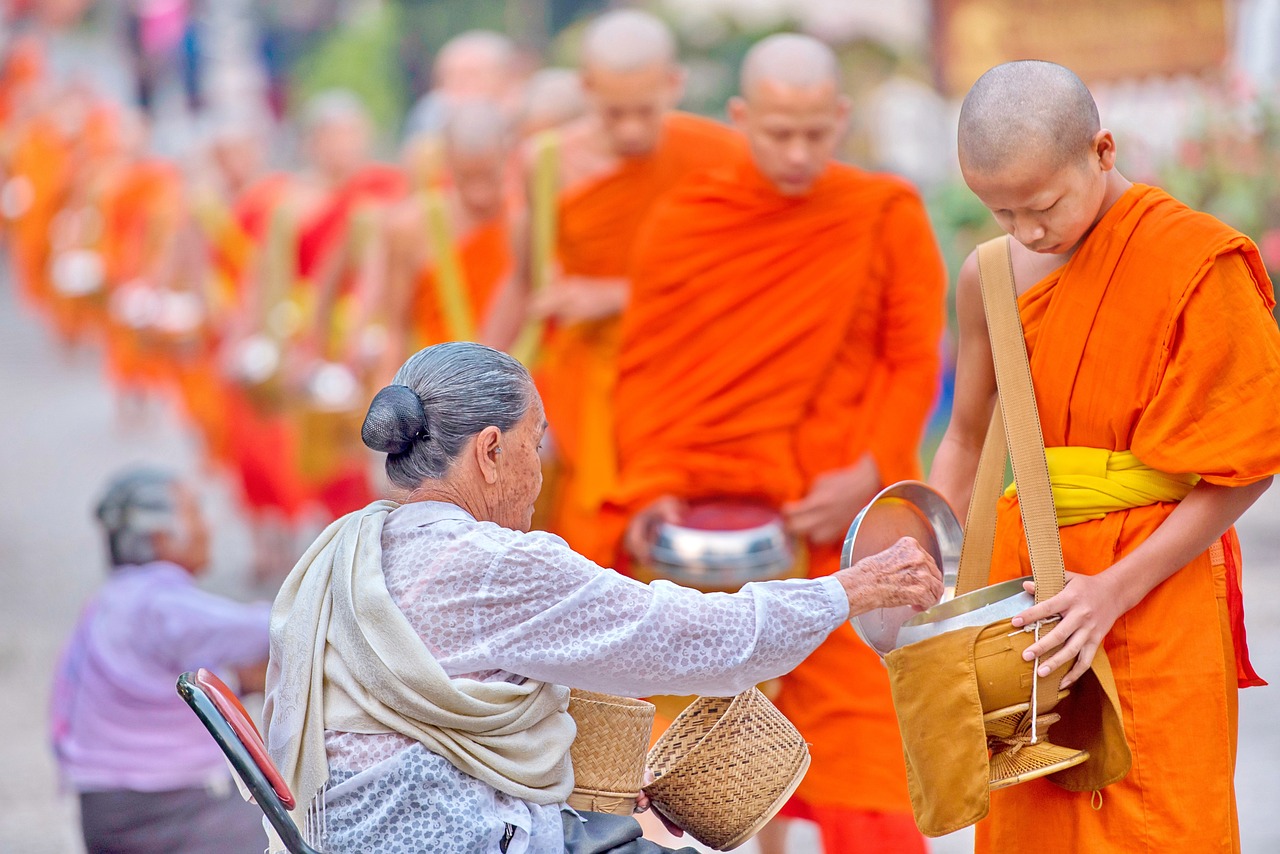
Challenges to Ahimsa
Ahimsa, the principle of non-violence, stands as a beacon of hope in the tumultuous seas of political strife and social conflict. However, the journey to uphold this noble ideal is fraught with challenges that can test even the most steadfast advocates of peace. One of the primary obstacles is the pervasive culture of violence that often permeates societies. When individuals grow up in environments where aggression is normalized, adopting a philosophy of non-violence can seem not only difficult but almost unrealistic. It’s akin to trying to swim upstream in a raging river; the current of societal norms can be overwhelmingly strong.
Moreover, the political landscape can be unforgiving. Leaders and governments may prioritize power and control over compassion and understanding. In many cases, political agendas are driven by fear, which can lead to the justification of violent means to achieve ends. This creates a paradox where the very systems that are supposed to protect peace can often be the ones that perpetuate conflict. For instance, consider the military interventions that have been justified under the guise of promoting democracy. While the intention may be to foster peace, the execution often leads to devastating consequences for innocent civilians, undermining the very tenets of ahimsa.
Another challenge arises from the internal conflicts within individuals who strive to embody ahimsa. The human experience is a complex interplay of emotions, and it can be incredibly challenging to maintain a non-violent stance when confronted with personal grievances or societal injustices. Imagine being in a heated argument where your values are being challenged; the instinct to retaliate can be overwhelming. Thus, the practice of ahimsa requires not only external commitment but also deep internal work, which can be a lifelong journey.
Furthermore, the globalized nature of today's world complicates the application of ahimsa. Conflicts often transcend borders, and the interconnectedness of nations means that actions taken in one part of the world can have ripple effects elsewhere. This interconnectedness can lead to a sense of helplessness among those who advocate for peace. How can one individual's commitment to non-violence make a difference in a world filled with systemic violence? This question looms large for many, creating a sense of despair.
In addition, there are those who exploit the philosophy of ahimsa for their own agendas, often misrepresenting it to justify inaction in the face of real threats. This manipulation can lead to disillusionment among true advocates of peace, as they witness the principles they hold dear being twisted to serve self-interested motives. It’s crucial to recognize that while ahimsa promotes non-violence, it does not advocate for passivity in the face of injustice. The challenge lies in balancing the commitment to non-violence with the need to stand against wrongdoing.
Ultimately, the challenges to ahimsa are multifaceted and require a concerted effort to address. It involves not only a commitment to personal practice but also a collective movement towards creating a culture that values dialogue, understanding, and compassion. As we navigate these complex waters, let us remember that every small act of kindness and every effort to resolve conflict peacefully contributes to the broader tapestry of non-violence. Together, we can strive to overcome these obstacles and embody the true spirit of ahimsa in our political and personal lives.
- What is ahimsa? Ahimsa is the principle of non-violence in Buddhism, emphasizing compassion and respect for all living beings.
- How can individuals practice ahimsa in their daily lives? Individuals can practice ahimsa by promoting kindness, resolving conflicts peacefully, and making conscious choices that minimize harm to others.
- What are some historical examples of ahimsa in action? Notable figures such as Mahatma Gandhi and Martin Luther King Jr. have exemplified ahimsa through their non-violent resistance movements.
- What challenges do advocates of ahimsa face today? Advocates face challenges such as societal norms that promote violence, political systems that prioritize power over peace, and personal conflicts that test their commitment to non-violence.
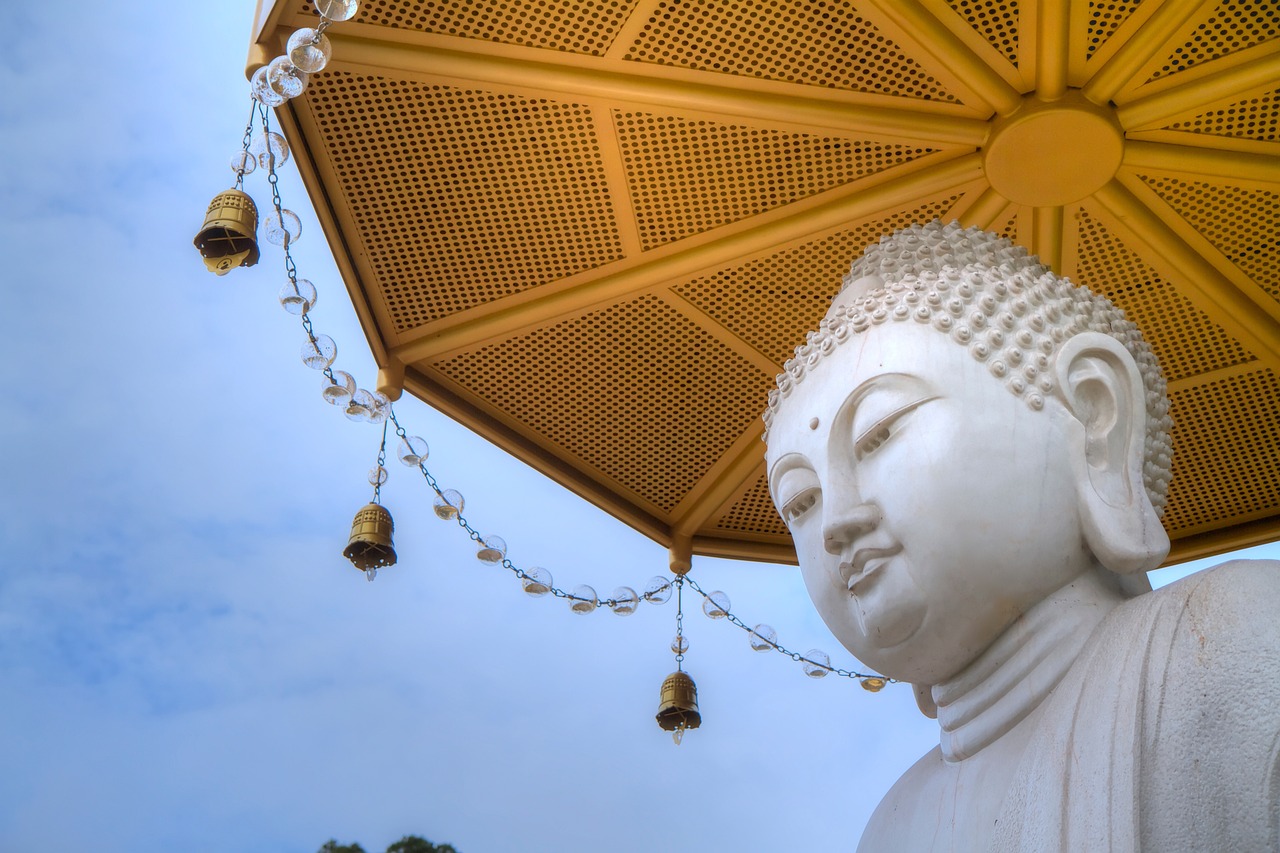
Mindfulness and Political Leadership
In today's fast-paced political landscape, the concept of mindfulness emerges as a beacon of hope for leaders striving to navigate complex challenges. Imagine a world where political figures approach their duties not just with strategy and ambition, but with a profound sense of awareness and presence. Mindfulness, rooted in Buddhist practices, encourages individuals to cultivate a deep understanding of their thoughts, emotions, and actions. This practice is not merely about meditation; it’s about being fully present in the moment and making decisions that resonate with compassion and clarity.
Political leadership often demands quick decisions and rapid responses to crises. However, in the rush to act, leaders can sometimes lose sight of the broader implications of their choices. By integrating mindfulness into their leadership styles, politicians can foster an environment where thoughtful deliberation takes precedence over impulsive reactions. This approach can lead to more effective governance, as leaders become more attuned to the needs and concerns of their constituents. They can ask themselves: “How will this decision impact the community? Am I considering all perspectives?”
Moreover, mindfulness encourages leaders to practice active listening. This means not just hearing what others say but truly understanding their viewpoints. In a political arena often characterized by divisiveness, the ability to listen and empathize can pave the way for constructive dialogue and collaboration. When leaders model this behavior, they set a standard for their teams and constituents, promoting a culture of respect and understanding.
To illustrate the impact of mindfulness on political leadership, let’s consider some potential benefits:
- Enhanced Decision-Making: Mindful leaders are more likely to consider the long-term effects of their decisions, leading to policies that benefit society as a whole.
- Improved Conflict Resolution: By approaching conflicts with a calm and open mind, leaders can mediate disputes more effectively, fostering unity rather than division.
- Resilience in Adversity: Mindfulness equips leaders with the tools to manage stress and maintain composure during challenging times, allowing for clearer thinking and better outcomes.
Furthermore, the practice of mindfulness can also extend to the political environment itself. When governments encourage mindfulness initiatives, they can cultivate a more engaged and aware citizenry. Imagine community workshops focused on mindfulness practices, where individuals come together to learn and grow. Such initiatives can strengthen community bonds and encourage civic participation, ultimately leading to a more harmonious society.
However, the journey towards integrating mindfulness into political leadership is not without its challenges. Skepticism about the effectiveness of mindfulness practices can hinder acceptance in traditional political circles. Additionally, the fast-paced nature of politics often leaves little room for reflection and introspection. Yet, as more leaders recognize the value of mindfulness, there is hope that this transformative practice will gain traction, reshaping the political landscape for the better.
In conclusion, mindfulness offers a powerful lens through which political leadership can evolve. By embracing this practice, leaders can not only enhance their decision-making abilities but also cultivate a political culture rooted in compassion, understanding, and peace. As we look to the future, the integration of mindfulness into political leadership could be the key to addressing the myriad challenges facing our societies, creating a more peaceful and just world for all.
Q1: What is mindfulness?
Mindfulness is the practice of being fully present and engaged in the moment, aware of your thoughts and feelings without judgment. It is often cultivated through meditation and can enhance emotional regulation and clarity in decision-making.
Q2: How can mindfulness benefit political leaders?
Mindfulness can help political leaders make more thoughtful decisions, improve their ability to listen and empathize, and foster resilience in the face of challenges, leading to better governance.
Q3: Are there any examples of mindfulness in political leadership?
Yes, various leaders around the world have begun to incorporate mindfulness into their practices, focusing on community engagement and thoughtful decision-making processes that prioritize the well-being of their constituents.
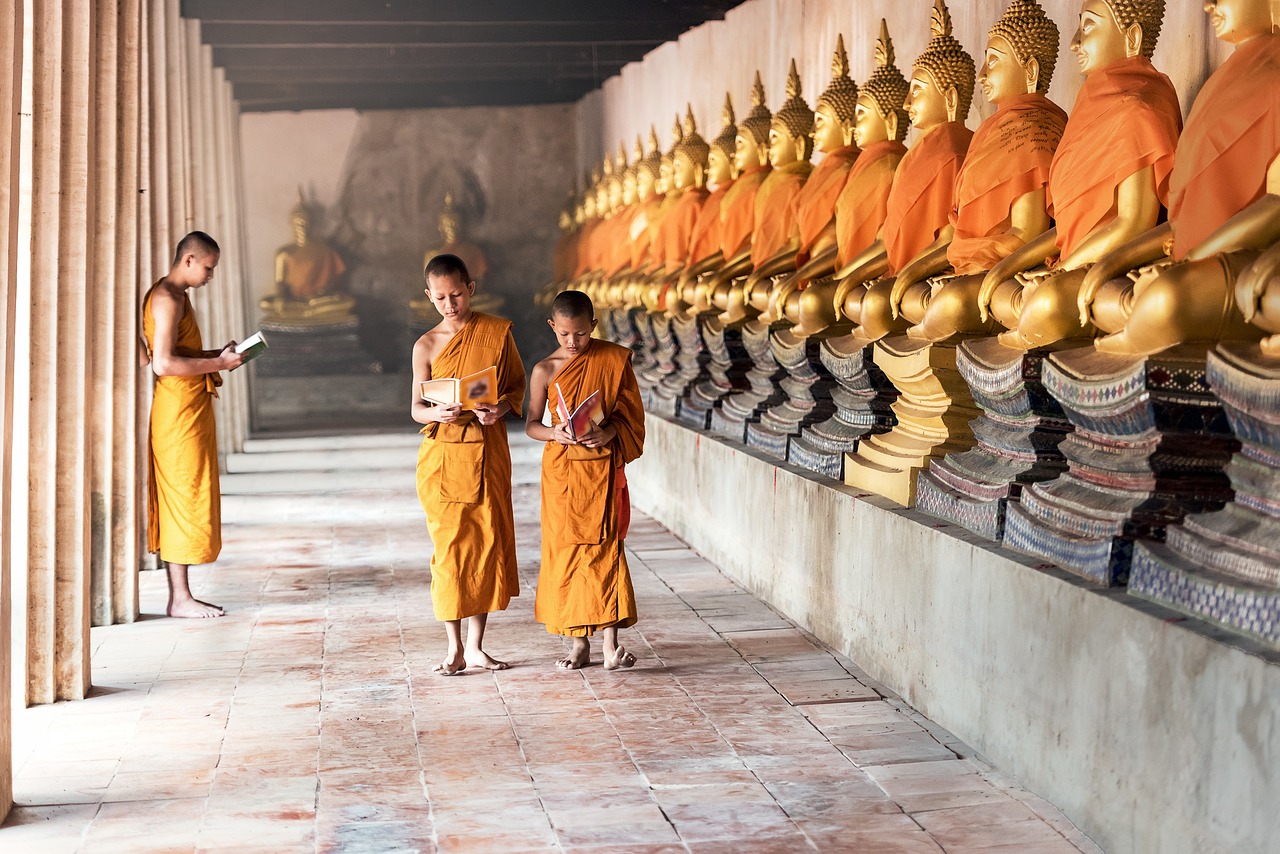
Buddhist Responses to Conflict
Buddhism offers a unique lens through which to view and address conflicts, emphasizing the importance of dialogue, understanding, and compassion. Unlike many traditional approaches that may lean towards aggression or retribution, Buddhist philosophy advocates for a peaceful resolution through mindful engagement and empathetic communication. This perspective is rooted in the belief that conflict often arises from misunderstanding and ignorance, and by fostering awareness and empathy, we can pave the way for reconciliation and harmony.
One of the core tenets of Buddhist conflict resolution is the practice of Right Speech, which is part of the Eightfold Path. This principle encourages individuals to communicate truthfully and kindly, avoiding harmful words that can escalate tensions. When faced with disputes, Buddhist practitioners are taught to pause, reflect, and choose their words carefully, promoting a dialogue that is constructive rather than destructive. This approach not only helps to de-escalate conflicts but also builds a foundation of trust and respect between opposing parties.
Moreover, Buddhist leaders and communities often engage in mediation as a means to resolve conflicts. In many cases, this involves bringing together conflicting parties in a safe and neutral environment where they can express their grievances openly. The role of a mediator, often a respected figure within the community, is to facilitate discussions, ensuring that each side is heard and understood. This process not only addresses the immediate issues at hand but also fosters a deeper understanding of the underlying causes of the conflict, which can lead to more sustainable resolutions.
To illustrate these principles in action, consider the case of the peace initiatives in Myanmar, where Buddhist monks have played a pivotal role in advocating for peace amidst ethnic tensions. By promoting messages of compassion and understanding, these monks have worked tirelessly to bridge divides between different communities. Their efforts highlight the potential of Buddhist philosophy to inspire social change and promote peaceful coexistence, even in the most challenging situations.
In addition to direct mediation efforts, Buddhist responses to conflict also emphasize the importance of community involvement. Collective action can amplify the message of peace and create a supportive environment for conflict resolution. For instance, community gatherings and interfaith dialogues are often organized to foster understanding among different groups. These initiatives not only address immediate conflicts but also build long-term relationships based on mutual respect and shared values.
However, it’s important to acknowledge that implementing these peaceful strategies is not without its challenges. In many regions, political and social pressures can hinder the effectiveness of Buddhist approaches to conflict resolution. Despite these obstacles, the commitment to peace and non-violence remains a central tenet of Buddhist philosophy, inspiring individuals and communities to continue striving for harmony in the face of adversity.
In summary, the Buddhist response to conflict is characterized by a profound commitment to dialogue, mediation, and community engagement. By fostering understanding and compassion, Buddhism offers valuable tools for addressing conflicts in a constructive manner. As we navigate the complexities of our modern world, these principles serve as a reminder of the power of peaceful resolution and the importance of empathy in our interactions with others.
- What is the main goal of Buddhist conflict resolution? The main goal is to foster understanding and compassion, leading to peaceful resolutions rather than aggression.
- How does mindfulness play a role in resolving conflicts? Mindfulness helps individuals to pause and reflect before reacting, promoting thoughtful and kind communication.
- Can Buddhist principles be applied in non-Buddhist contexts? Absolutely! The principles of empathy, dialogue, and understanding are universal and can benefit any conflict situation.
- What challenges do Buddhist responses to conflict face? Political pressures, social tensions, and cultural misunderstandings can complicate the implementation of peaceful strategies.

Case Studies of Peace Initiatives
When we look at the world through the lens of Buddhist philosophy, we can find numerous examples where its principles have been applied to foster peace. One notable case is the role of Buddhist monks during the Sri Lankan civil war. These monks, guided by the teachings of compassion and non-violence, initiated dialogues between conflicting parties. Their efforts were not merely about mediating; they aimed to bridge the deep-seated divisions that had plagued the nation for decades. By organizing peace marches and interfaith dialogues, they showcased how Buddhist principles could be a powerful tool for reconciliation.
Another compelling example can be found in the work of the International Network of Engaged Buddhists (INEB). Founded in 1989, this organization focuses on applying Buddhist teachings to social issues, including environmental sustainability and human rights. One of their significant initiatives involved mobilizing communities in Thailand to address the environmental crisis caused by deforestation. Through community-led projects that emphasized mindfulness and respect for nature, they not only worked towards ecological restoration but also fostered a sense of unity among diverse groups. This initiative exemplifies how Buddhist principles can be translated into action for the greater good.
Additionally, we cannot overlook the impact of the Peaceful Revolution in Myanmar, where Buddhist monks played a pivotal role in advocating for democracy and social justice. During the Saffron Revolution in 2007, monks led peaceful protests against the military regime, emphasizing the importance of compassion and non-violence. Their actions inspired thousands to join the movement, demonstrating how Buddhist philosophy can galvanize collective action in pursuit of peace and justice.
These case studies reveal a common thread: the application of Buddhist teachings not only provides a framework for understanding conflict but also offers practical methods for resolution. The emphasis on dialogue, compassion, and community engagement creates pathways for healing and reconciliation. It’s a reminder that peace is not merely the absence of conflict but a state of being that requires active participation and commitment from all involved.
In examining these initiatives, we see that the principles of Buddhism—like ahimsa and mindfulness—are not just theoretical concepts but actionable strategies that can lead to transformative change in society. As we move forward, it is essential to learn from these examples and continue to advocate for peace through the lens of compassion and understanding.
- What is the role of Buddhist philosophy in peace initiatives?
Buddhist philosophy emphasizes principles such as compassion, non-violence, and dialogue, which serve as foundational elements in various peace initiatives around the world. - Can Buddhist teachings be applied to modern conflicts?
Yes, many contemporary movements draw inspiration from Buddhist teachings to address social justice issues, promote reconciliation, and foster community engagement in conflict resolution. - How do Buddhist monks contribute to peacebuilding?
Buddhist monks often take on leadership roles in peacebuilding efforts, using their influence to advocate for non-violent solutions and to facilitate dialogues between conflicting parties.
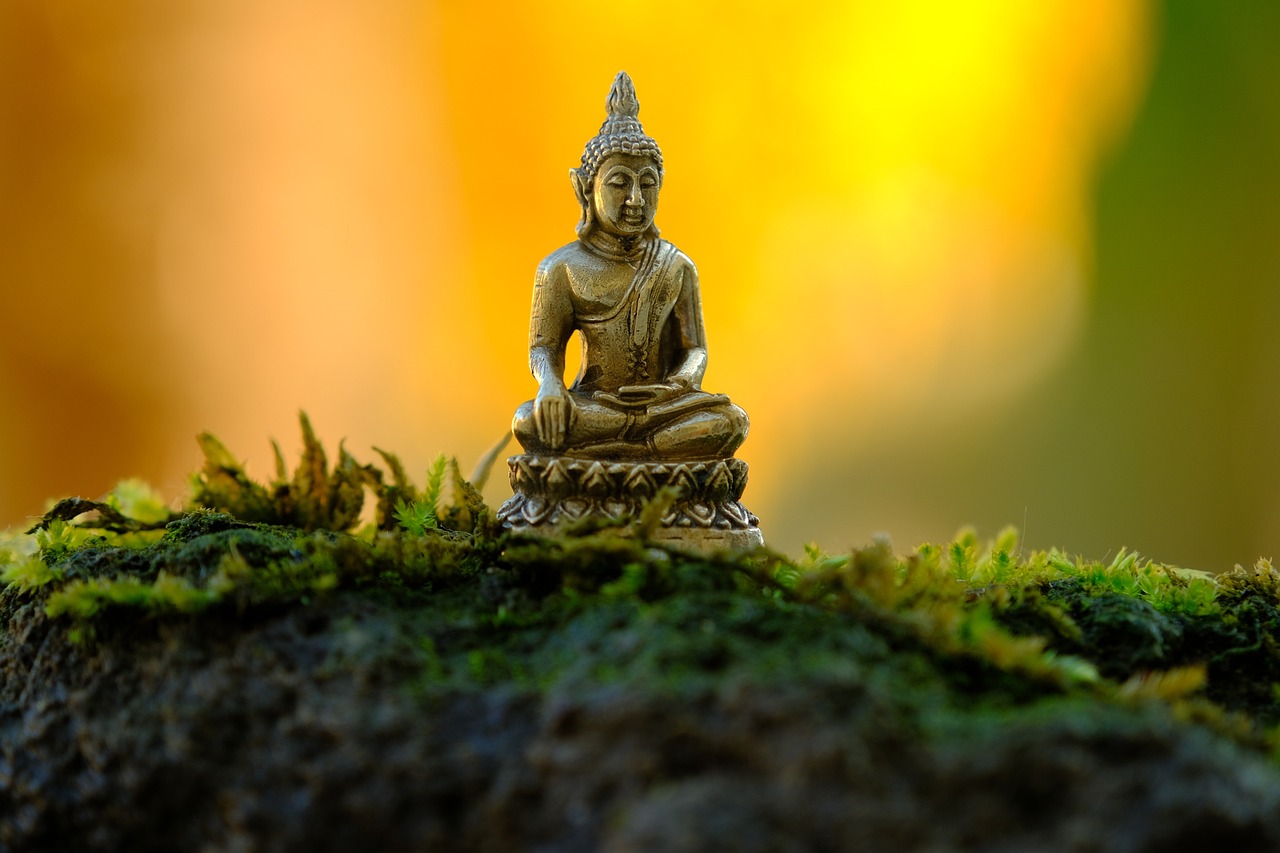
The Role of Community in Peacebuilding
When we think about peacebuilding, it’s easy to get lost in the grand narratives of politicians and leaders. But the real magic often happens at the grassroots level, where communities come together to foster understanding and harmony. Community engagement is not just a buzzword; it's a vital ingredient in the recipe for sustainable peace. Imagine a garden where every plant contributes to the ecosystem—this is how communities function in peacebuilding.
In Buddhism, the concept of sangha—the community of practitioners—plays a crucial role in maintaining a peaceful society. This community is more than just a group of individuals; it’s a collective that shares values, supports one another, and works towards common goals. When individuals unite under the shared intention of peace, they create a powerful force capable of overcoming conflict. For instance, community-based initiatives often focus on dialogue and mutual respect, which are essential for resolving tensions.
One of the most compelling aspects of community involvement in peacebuilding is the capacity for collective action. When people come together, they can amplify their voices and create a larger impact. This is particularly evident in various Buddhist communities around the globe, where members engage in activities such as:
- Organizing meditation sessions to promote inner peace
- Facilitating workshops that focus on conflict resolution
- Engaging in community service projects that foster goodwill
These activities not only strengthen the bonds within the community but also extend their reach to the broader society. By embodying the principles of compassion and understanding, communities can serve as models for peaceful coexistence. Moreover, when individuals see their neighbors actively participating in peacebuilding efforts, it inspires them to join in, creating a ripple effect that can lead to widespread change.
However, this is not without its challenges. Communities often face internal divisions and external pressures that can hinder their peacebuilding efforts. For example, differing opinions on how to approach a conflict can lead to discord within the community itself. It’s crucial for community leaders to foster an environment where open dialogue is encouraged, allowing for diverse perspectives to be heard and respected. This process not only builds trust but also equips community members with the tools to navigate their differences constructively.
In essence, the role of community in peacebuilding is about creating a culture of peace that permeates every aspect of life. When communities prioritize peace, they cultivate an atmosphere where empathy, respect, and understanding flourish. This is akin to nurturing a tree: the stronger the roots, the more resilient the tree becomes against storms. By investing in community-building activities that promote peace, we can ensure that our societies are better equipped to handle conflicts when they arise.
As we look to the future, it’s clear that the path to lasting peace lies in the hands of the community. Every small action contributes to a larger movement, and every voice counts. So, whether it’s through local initiatives or global collaborations, let’s remember that we all have a role to play in this vital work of peacebuilding.
- What is the role of community in peacebuilding? Community plays a central role in peacebuilding by fostering collaboration, understanding, and collective action to address conflicts.
- How can individuals contribute to community peacebuilding? Individuals can contribute by participating in local initiatives, promoting dialogue, and supporting community-led projects aimed at fostering peace.
- What challenges do communities face in peacebuilding? Communities may face internal divisions, differing opinions, and external pressures that can hinder their efforts to build peace.
Frequently Asked Questions
- What are the core principles of Buddhist philosophy?
The core principles of Buddhist philosophy include the Four Noble Truths and the Eightfold Path. The Four Noble Truths outline the nature of suffering and the path to overcoming it, while the Eightfold Path provides practical guidelines for ethical conduct, mental discipline, and wisdom. Together, these principles serve as a foundation for promoting peace and harmony in society.
- How does the concept of ahimsa influence political actions?
Ahimsa, or non-violence, is a fundamental principle in Buddhism that significantly influences political actions. It encourages individuals and leaders to make ethical decisions that prioritize peaceful coexistence and conflict resolution. By embracing ahimsa, political movements can advocate for social justice and equality without resorting to violence, fostering an environment where dialogue and understanding thrive.
- Can you provide examples of historical figures who embodied ahimsa?
Throughout history, several notable figures have embodied the principle of ahimsa. For instance, Mahatma Gandhi is renowned for his non-violent resistance against British colonial rule in India. Similarly, Martin Luther King Jr. applied Buddhist-inspired non-violence in the American civil rights movement. Their legacies continue to inspire contemporary activists fighting for peace and justice.
- What challenges does ahimsa face in modern politics?
Despite its noble intentions, the application of ahimsa faces several challenges in modern politics. These include escalating conflicts, political polarization, and the temptation to respond to aggression with aggression. Maintaining a commitment to non-violence can be incredibly difficult, particularly in situations where emotions run high, and the stakes are significant.
- How can mindfulness enhance political leadership?
Mindfulness, a key practice in Buddhism, offers valuable insights for political leaders by promoting self-awareness and thoughtful decision-making. By cultivating mindfulness, leaders can better navigate complex political landscapes, enhance their emotional intelligence, and foster policies that prioritize peace and community well-being.
- What strategies do Buddhist leaders use for conflict resolution?
Buddhist leaders often employ strategies such as dialogue, mediation, and community engagement to address conflicts. These methods emphasize understanding differing perspectives and finding common ground, which can lead to lasting resolutions. By prioritizing communication and empathy, Buddhist approaches to conflict resolution can be effective in both local and global contexts.
- Can you share some successful case studies of Buddhist peace initiatives?
Yes! One successful case study is the work of the International Network of Engaged Buddhists, which has facilitated peace dialogues in conflict zones across Asia. Another example includes the efforts of Buddhist monks in Sri Lanka who have engaged in interfaith dialogues to promote reconciliation between different ethnic groups. These initiatives have demonstrated the power of Buddhist philosophy in fostering sustainable peace.
- What role does community play in Buddhist peacebuilding?
Community engagement is vital in Buddhist peacebuilding efforts. Collective action and shared values help create a sense of belonging and responsibility among community members. When individuals come together to promote peace, they can address local issues more effectively and build a resilient society that values harmony and cooperation.



















